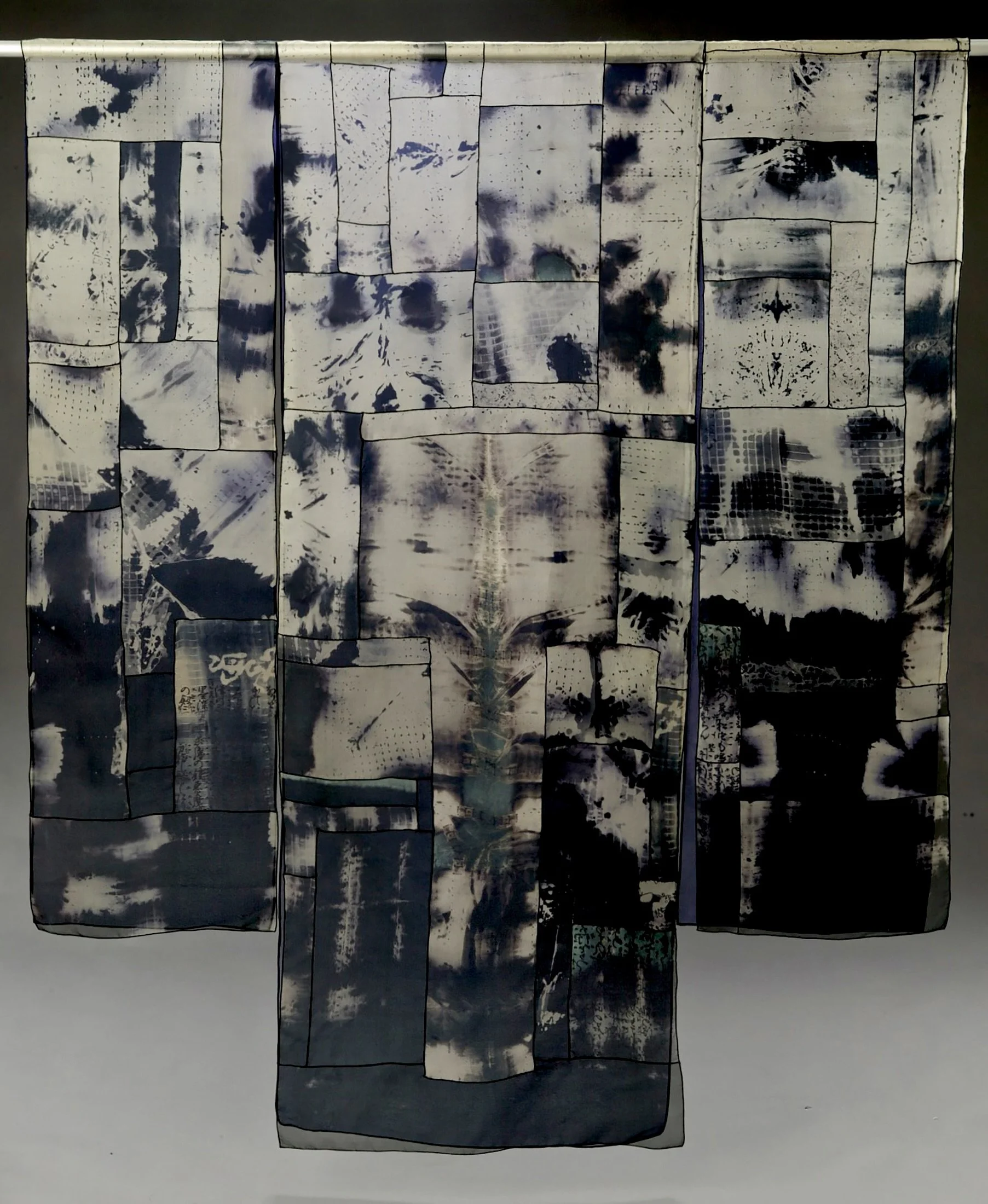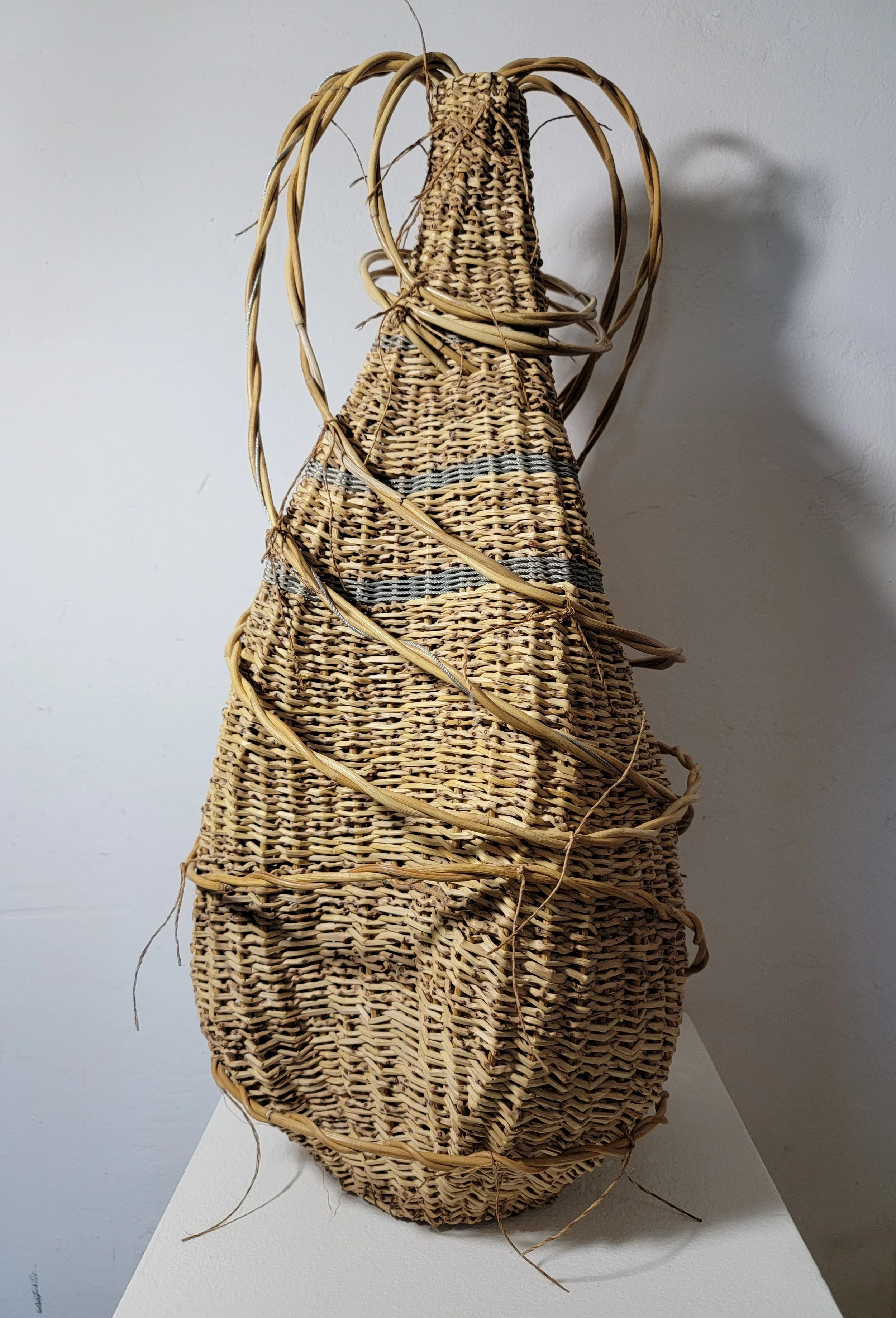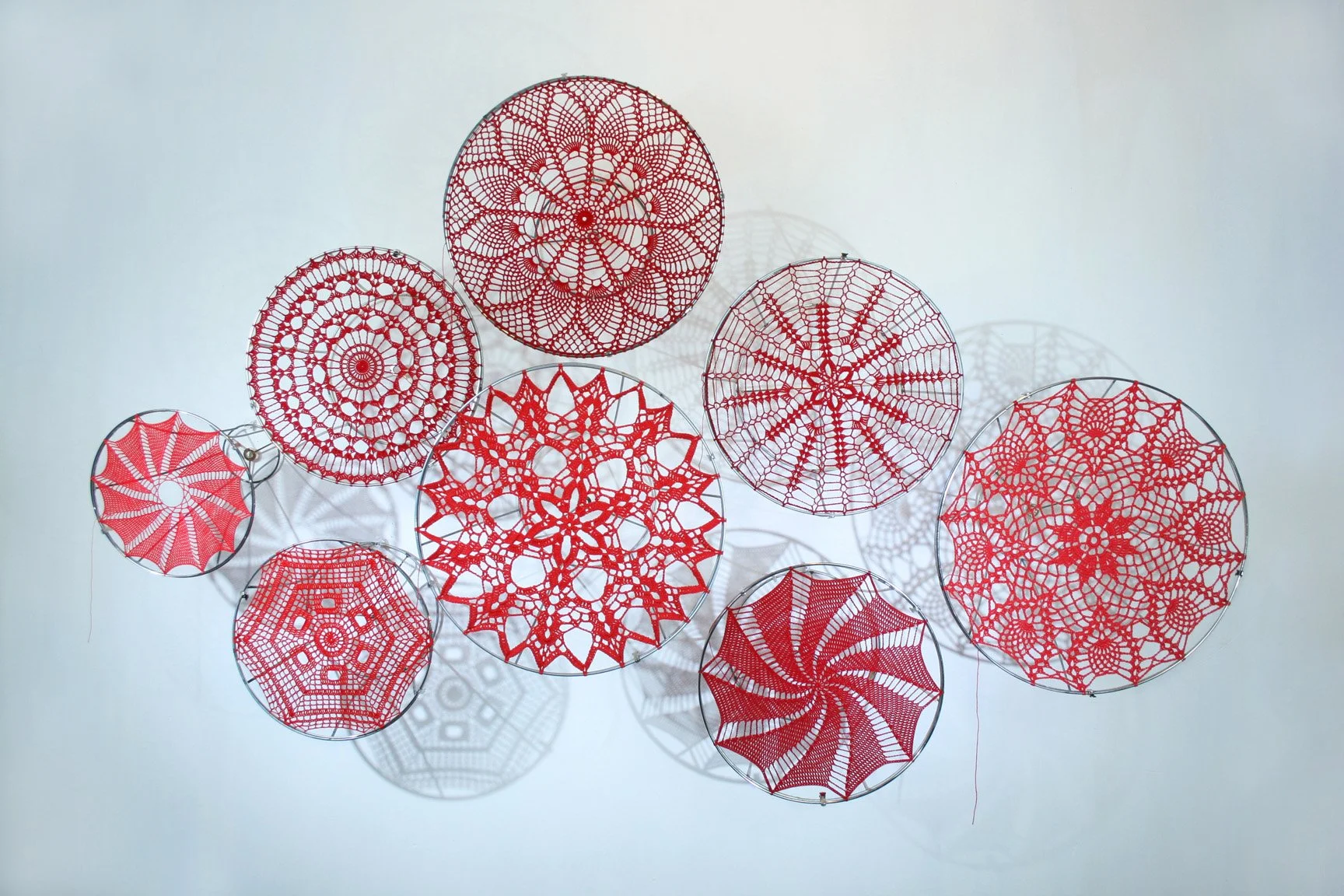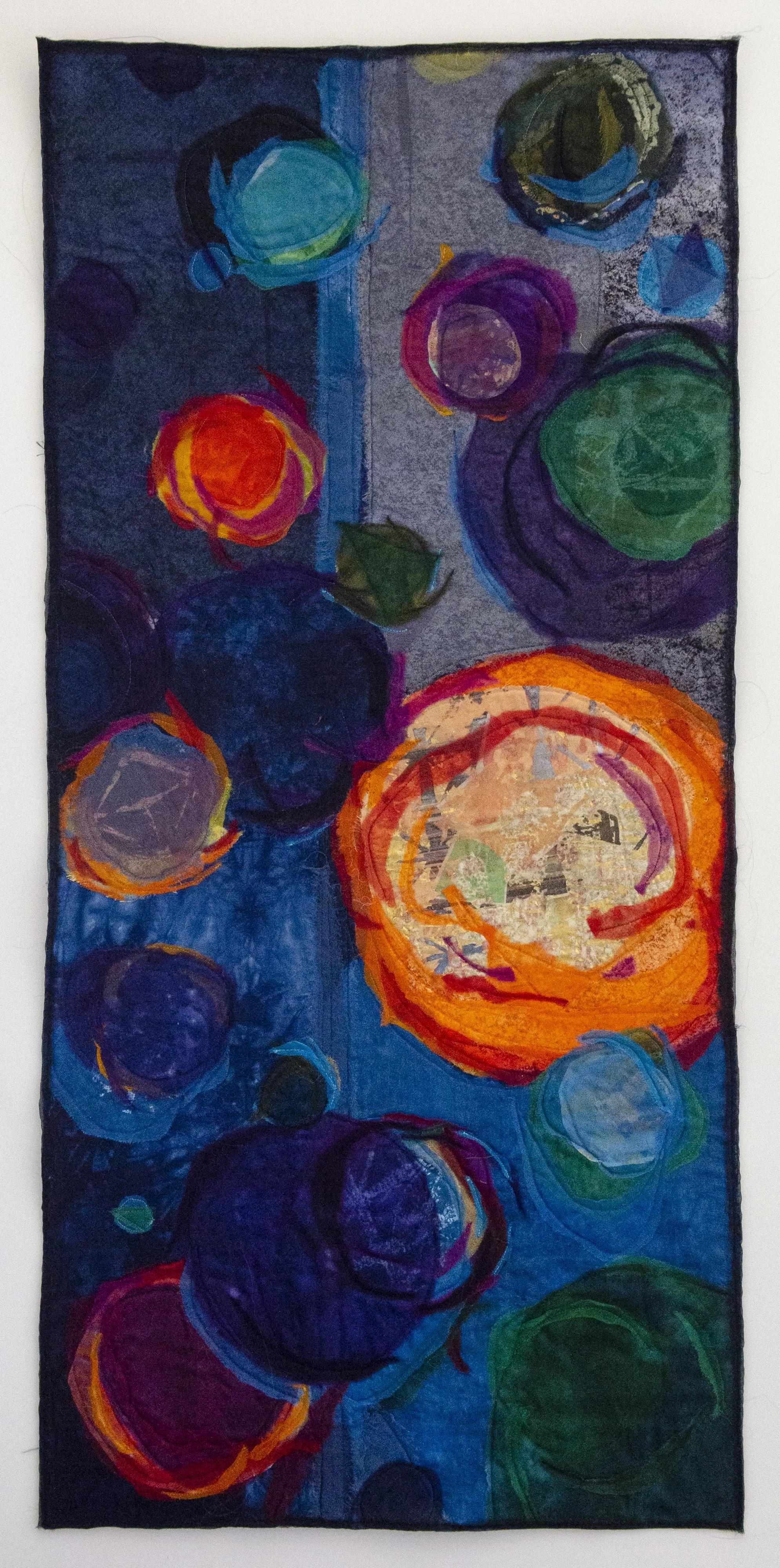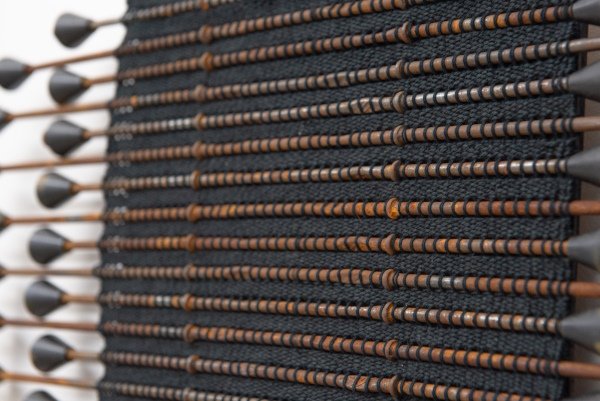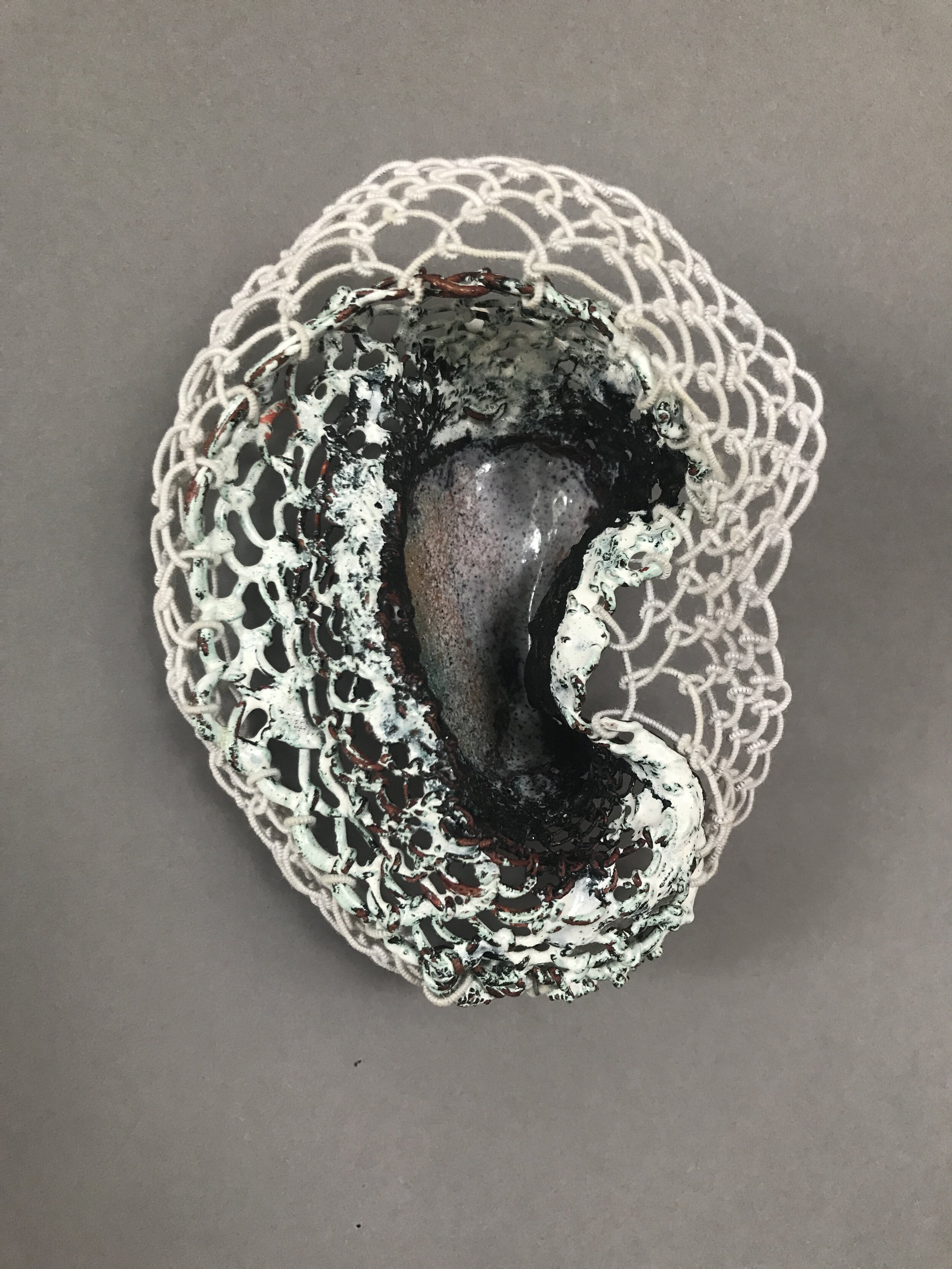California Fibers has a new exhibit coming, California Fibers: Texture and Form, at the Coastline College Art Gallery in Newport Beach, California, from September 3-October 10, 2025. The opening reception will be Friday, September 12, from 5-7 PM.
Marty Ornish, What the Ocean Once Dreamed
The curator, Guusje Sanders, wrote that “California Fibers: Texture and Form celebrates the innovative spirit and tactile richness of the California Fibers collective. Founded in 1970, this group of artists has continually pushed the boundaries of textile and fiber arts, exploring contemporary ideas through traditional and experimental processes. This exhibition highlights the diverse approaches to texture, form, and material through playful interpretation of a variety of techniques including basketry, quilting, weaving, and crochet. The collective's shared commitment to craft and conceptual exploration is rooted in social and environmental awareness, material exploration, and innovation. Each piece invites viewers to consider fiber not just as medium, but as a messenger of ideas.”
Michael F. Rohde, Dissolution
The exhibit features the work of twenty-two members of California Fibers, including: Sandy Abrams, Charlotte Bird, Ashley V. Blalock, Carrie Burckle, Marilyn McKenzie Chaffee, Doshi, Polly Jacobs Giacchina, Susan Henry, Lydia Tjioe Hall, Annette Heully, AniFaye Korngute, Brecia Kralovic-Logan, Chari Myers, Kathy Nida, Carol Nilsen, Marty Ornish, Michael F. Rohde, Rebecca Smith, Cameron Taylor-Brown, Elise Vazelakis, Debra Weiss, and Peggy Wiedemann.
Lydia Tjioe Hall, Fluid Dynamics
Guusje Sanders, originally from the Netherlands and residing in the United States since 2006, joined Mingei International Museum's curatorial team as Curator in August 2023. Most recently, she co-curated Blue Gold: The Art and Science of Indigo, presented as part of Getty's PST ART: Art and Science Collide and has two forthcoming shows opening this fall, Boundless: Reflections of Southern California Landscapes in Midcentury Studio Ceramics and Restitched: Feed Sacks in Mid-Twentieth Century Quilts. Prior to this position, she served as the Associate Curator at the Institute of Contemporary Art, San Diego, formerly Lux Art Institute, for 6 years.
Doshi, One with the Shadows
Coastline College Art Gallery is a vital and respected art venue serving Orange County art students, artists, and art enthusiasts. The Art Gallery holds workshops and exhibition programs, as well as receptions, artist lectures, and other art-related events. It has even been recognized as one of the top 15 excellent on-campus art galleries in Southern California. The gallery is located at 1515 Monrovia Ave, Newport Beach, CA. Gallery hours are Wednesday - Friday, 10 am – 4 pm, or by appointment. Admission is free. Questions? Contact David Michael Lee at dmlee@coastline.edu.
Polly Jacobs Giacchina, Kept Secure
California Fibers, founded in 1970, supports artistic growth and professional advancement for contemporary Southern California fiber artists. The imagination and superb craftsmanship of these artists place them in the highest echelons of their fields. The group has an extensive exhibition history in the USA and abroad. Many of its members are well-represented in museums and private collections and are recipients of prestigious awards from around the world. Their creative expression includes weaving, basketry, sculpture, quilting, embroidery, felting, surface design, knitting, crochet, wearables, and mixed media.
Ashley Blalock, Shades of Home
Looking forward to seeing you at the show!
Carol Nilsen, Ricochet Dimensions
Kathy Nida, Lost in the Trees




